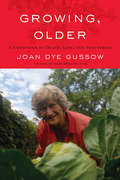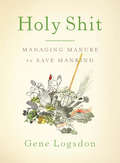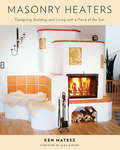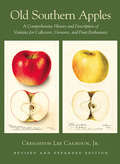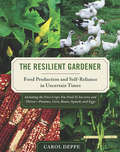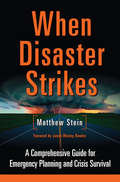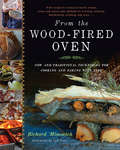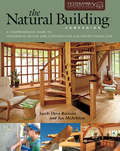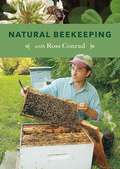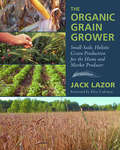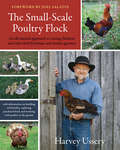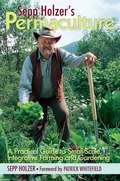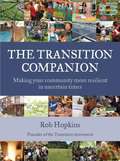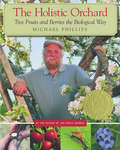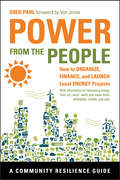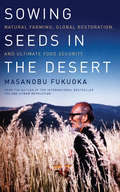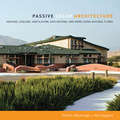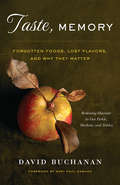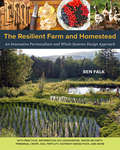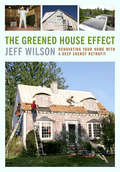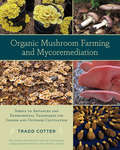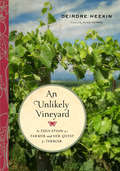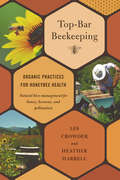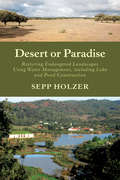- Table View
- List View
Growing, Older
by Joan Dye GussowMichael Pollan calls her one of his food heroes. Barbara Kingsolver credits her with shaping the history and politics of food in the United States. And countless others who have vied for a food revolution, pushed organics, and reawakened Americans to growing their own food and eating locally consider her both teacher and muse. Joan Gussow has influenced thousands through her books, This Organic Life and The Feeding Web, her lectures, and the simple fact that she lives what she preaches. Now in her eighties, she stops once more to pass along some wisdom-surprising, inspiring, and controversial-via the pen. Gussow's memoir Growing, Older begins when she loses her husband of 40 years to cancer and, two weeks later, finds herself skipping down the street-much to her alarm. Why wasn't she grieving in all the normal ways? With humor and wit, she explains how she stopped worrying about why she was smiling and went on worrying, instead, and as she always has, about the possibility that the world around her was headed off a cliff. But hers is not a tale, or message, of gloom. Rather it is an affirmation of a life's work-and work in general. Lacking a partner's assistance, Gussow continued the hard labor of growing her own year-round diet. She dealt single-handedly with a rising tidal river that regularly drowned her garden, with muskrat interlopers, broken appliances, bodily decay, and river trash-all the while bucking popular notions of how "an elderly widowed woman" ought to behave. Scattered throughout are urgent suggestions about what growing older on a changing planet will call on all of us to do: learn self-reliance and self-restraint, yield graciously if not always happily to necessity, and-since there is no other choice-come to terms with the insistence of the natural world. Gussow delivers another literary gem-one that women curious about aging, gardeners curious about contending with increasingly intense weather, and environmentalists curious about the future will embrace.
Holy Shit
by Gene Logsdon"The contrary farmer" (as one of his books is titled) shares his enthusiasm for this valuable resource, whose neglect he argues will put us in deeper do-do regarding soil health and food production. Drawing on farm experience and study of cultural history, Logsdon discusses manure's "divine" nutrients, and composting and other 'green' methods of manure management. Annotation ©2010 Book News, Inc. , Portland, OR (booknews. com)
Masonry Heaters
by Ken MateszThis colorful volume details the function and beauty of masonry heaters, special fireplaces found mostly in northern and eastern Europe, that use thermal mass and complex heat exchanging flue configurations to create super efficient home heating systems. Matesz, a masonry heater builder and evangelist, provides information about the history, design and building of these massive fireplaces and numerous color photographs showcase modern and historical examples in a variety of materials and configurations, from around the world. This volume functions not only as an introduction for Americans to a unique heating mechanism not often seen outside of Europe but also as a technical guide. Numerous build photos, planning drawings and appendices regarding insulation and other technical topics are included. Annotation ©2010 Book News, Inc. , Portland, OR (booknews. com)
Old Southern Apples
by Creighton Lee CalhounA book that became an instant classic when it first appeared in 1995, Old Southern Apples is an indispensable reference for fruit lovers everywhere, especially those who live in the southern United States. Out of print for several years, this newly revised and expanded edition now features descriptions of some 1,800 apple varieties that either originated in the South or were widely grown there before 1928. Author Lee Calhoun is one of the foremost figures in apple conservation in America. This masterwork reflects his knowledge and personal experience over more than thirty years, as he sought out and grew hundreds of classic apples, including both legendary varieties (like Nickajack and Magnum Bonum) and little-known ones (like Buff and Cullasaga). Representing our common orchard heritage, many of these apples are today at risk of disappearing from our national table. Illustrated with more than 170 color images of classic apples from the National Agricultural Library's collection of watercolor paintings, Old Southern Apples is a fascinating and beautiful reference and gift book. In addition to A-to-Z descriptions of apple varieties, both extant and extinct, Calhoun provides a brief history of apple culture in the South, and includes practical information on growing apples and on their traditional uses.
The Resilient Gardener
by Carol DeppeScientist/gardener Carol Deppe combines her passion for gardening with newly emerging scientific information from many fields - resilience science, climatology, climate change, ecology, anthropology, paleontology, sustainable agriculture, nutrition, health, and medicine. In the last half of The Resilient Gardener, Deppe extends and illustrates these principles with detailed information about growing and using five key crops: potatoes, corn, beans, squash, and eggs. In this book you'll learn how to:-Garden in an era of unpredictable weather and climate change-Grow, store, and use more of your own staple crops-Garden efficiently and comfortably (even if you have a bad back)-Grow, store, and cook different varieties of potatoes and save your own potato seed-Grow the right varieties of corn to make your own gourmet-quality fast-cooking polenta, cornbread, parched corn, corn cakes, pancakes and even savory corn gravy-Make whole-grain, corn-based breads and cakes using the author's original gluten-free recipes involving no other grains, artificial binders, or dairy products-Grow and use popbeans and other grain legumes-Grow, store, and use summer, winter, and drying squash-Keep a home laying flock of ducks or chickens; integrate them with your gardening, and grow most of their feed. The Resilient Gardener is both a conceptual and a hands-on gardening book, and is suitable for gardeners at all levels of experience. Resilience here is broadly conceived and encompasses a full range of problems, from personal hard times such as injuries, family crises, financial problems, health problems, and special dietary needs (gluten intolerance, food allergies, carbohydrate sensitivity, and a need for weight control) to serious regional and global disasters and climate change. It is a supremely optimistic as well as realistic book about how resilient gardeners and their gardens can flourish even in challenging times and help their communities to survive and thrive through everything that comes their way - from tomorrow through the next thousand years.
When Disaster Strikes
by Matt SteinThis well written guide provides instruction on making sure your needs are met for food, water, first aid and self-defense in any crisis. Specific instructions for handling seven types of disasters, from fire and earthquakes to electromagnetic pulses and solar storms are provided. Useful figures appear throughout, and the book closes with recommended reading and resources. Stein is an avid outdoorsman and green builder. Annotation ©2012 Book News, Inc. , Portland, OR (booknews. com)
From the Wood-Fired Oven
by Richard MiscovichIn the past twenty years, interest in wood-fired ovens has increased dramatically in the United States and abroad, but most books focus on how to bake bread or pizza in an oven. From the Wood-Fired Oven offers many more techniques for home and artisan bakers-from baking bread and making pizza to recipes on how to get as much use as possible out of a single oven firing, from the first live-fire roasting to drying wood for the next fire. From the Wood-Fired Oven offers a new take on traditional techniques for professional bakers, but is simple enough to inspire any nonprofessional baking enthusiast. Leading baker and instructor Richard Miscovich wants people to use their ovens to fulfill the goal of maximum heat utilization. Readers will find methods and techniques for cooking and baking in a wood-fired oven in the order of the appropriate temperature window. What comes first-pizza, or pastry? Roasted vegetables or a braised pork loin? Clarified butter or beef jerky? In addition to an extensive section of delicious formulas for many types of bread, readers will find chapters on: - Making pizza and other live-fire flatbreads; - Roasting fish and meats; - Grilling, steaming, braising, and frying; - Baking pastry and other recipes beyond breads; - Rendering animal fats and clarifying butter; - Food dehydration and infusing oils; - And myriad other ways to use the oven's residual heat. Appendices include oven-design recommendations, a sample oven temperature log, Richard's baker's percentages, proper care of a sourdough starter, and more. . . . From the Wood Fired Oven is more than a cookbook; it reminds the reader of how a wood-fired oven (and fire, by extension) draws people together and bestows a sense of comfort and fellowship, very real human needs, especially in uncertain times. Indeed, cooking and baking from a wood-fired oven is a basic part of a resilient lifestyle, and a perfect example of valuable traditional skills being put to use in modern times.
The Natural Building Companion
by Ace Mcarleton Jacob Deva RacusinNatural buildings not only bring satisfaction to their makers and joy to their occupants, they also leave the gentlest footprint on the environment. In this complete reference to natural building philosophy, design, and technique, Jacob Deva Racusin and Ace McArleton walk builders through planning and construction, offering step-by-step instructions on: siting and site analysis choosing materials integrating basic structural considerations into a design strategies for heating/cooling efficiency and moisture management planning for acoustics developing an integrative design navigating budgeting, code compliance, and project management creating the foundation, wall system, roof, and floors selecting and making plasters and paints evaluating options for mechanical and utility systems protecting against fire and insects integrating structures within landscape, climate, and human communities . . . and more Applicable to building in climates that are cold and wet, hot and dry, or somewhere in-between, The Natural Building Companion provides the tools necessary to understand basic principles of building science, including structural and thermal engineering, and hydrodynamics. This guide offers thorough, up-to-date, and advanced installation details and performance characteristics of straw-bale, straw-clay, woodchip-clay, and cellulose wall systems, as well as earthen and stone wall systems and a variety of framing, roofing, flooring, mechanical system, and finishing options. This fully-illustrated volume informs professionals making the transition from conventional building, homeowners embarking on their own construction, or green builders who want comprehensive guidance on natural-building options. A State-of-the-Art Resource for Natural Builders The Natural Building Companion is a part of The Yestermorrow Design/Build Library and includes an instructional DVD.
Natural Beekeeping
by Ross ConradToday's beekeepers face unprecedented challenges, a fact that is now front-page news with the spread of "colony collapse disorder. " Newly introduced pests like varroa and tracheal mites have made chemical treatment of hives standard practice, but pest resistance is building, which in turn creates demand for new and even more toxic chemicals. In fact, there is evidence that chemical treatments are making matters worse. It's time for a new approach. In this set, which includes the new, full-color,Natural Beekeeping, Revised and Expanded Edition, and a DVD workshop, Ross Conrad brings together the best "do no harm" strategies for keeping honeybees healthy and productive, all of which are covered in a thoughtful, matter-of-fact way. AboutNatural Beekeeping, Revised and Expanded Edition:Now revised and updated with new resources and including full-color photos throughout,Natural Beekeepingoffers all the latest information in a book that has already proven invaluable for organic beekeepers. The new edition offers the same holistic, sensible alternative to conventional chemical practices with a program of natural hive management, but offers new sections on a wide range of subjects, including: The basics of bee biology and anatomy; Urban beekeeping; Identifying and working with queens; Parasitic mite control; and Hive diseases. Also, a completely new chapter on marketing provides valuable advice for anyone who intends to sell a wide range of hive products. Natural Beekeepingcovers nontoxic methods of controlling mites; eliminating American foulbrood disease without the use of antibiotics; selective breeding for naturally resistant bees; and many other detailed management techniques, which are covered in a thoughtful, matter-of-fact way. Whether you are a novice looking to get started with bees, an experienced apiculturist looking for ideas to develop an integrated pest-management approach, or someone who wants to sell honey at a premium price, this is the book you've been waiting for. AboutNatural Beekeeping with Ross Conrad(DVD):In this filmed workshop, Ross Conrad flips the script on traditional approaches by proposing a program of selective breeding and natural hive management. The video presents a comprehensive survey of natural beekeeping methods and challenges, including segments filmed in thefield. It offers practical information that every aspiring beekeeper needs to know—everything from basic hive equipment to working with your bees to harvesting and processing honey.
The Organic Grain Grower
by Jack LazorThe ultimate guide to growing organic grains on a small and ecological scale, The Organic Grain Grower is invaluable for both home-scale and commercial producers interested in expanding their resiliency and crop diversity through growing their own grains. Longtime farmer and organic pioneer Jack Lazor covers how to grow and store wheat, barley, oats, corn, dry beans, soybeans, pulse crops, oilseeds, grasses, nutrient-dense forages, and lesser-known cereals. In addition to detailed cultivation and processing information, Lazor argues the importance of integrating grains on the organic farm (not to mention for the local-food system) for reasons of biodiversity and whole farm management. Including extensive information on: The history of grain growing and consumption in North America The twenty-first century and the birth of the local-food movement Considering your farm's scale and climate Understanding soil fertility and structure Planting your crop (including spring vs. fall cereals and preparing your soil) The growing and ripening process (reproductive, milk, hard-and-soft dough stages) The grain harvest Preparing grain for sale, storage, or end use (drying, cleaning seed, grain handling) Seed breeding and saving Machinery, infrastructure, and processing (both home-scale tools and larger farm equipment) Grinding grains for livestock rations (including how to put together a ration based on protein content) and sample rations for dairy cows, pigs, and chickens Processing grains for human consumption Additional resources and information for new grain farmers, and more. . . Beginners will learn how to grow enough wheat for a year's supply of bread flour for their homestead, and farmers will learn how to become part of a grain co-op, working alongside artisan bakers and mills. Never before has there been a guide to growing organic grains applicable both for the home-scale and professional farming scale. This will be a classic for decades to come and a crucial addition to any farmer's, homesteader's, gardener's, agronomist's, or seed-saver's library.
The Small-Scale Poultry Flock
by Harvey UsseryAn All-Natural Approach to Raising Chickens and Other Fowl for Home and Market Growers
Sepp Holzer's Permaculture
by Sepp HolzerThis interesting volume on permaculture and small scale alternative farming techniques provides detailed practical information while showing readers a glimpse inside the life and work of Sepp Holzer, a Austrian farmer who has transformed a small farm in Salzburg into a beacon for gardeners and activists for food independence around the world seeking alternatives to corporate controlled agriculture. The work is divided into sections covering landscape architecture, alternative agriculture, fruit trees, cultivating mushrooms, and gardens. Chapters discuss topics such as designing permacultural systems, multi-use livestock, mushroom cultivation methods, and kitchen and medicinal gardens. The work is packed with full-color photographs, illustrations, and technical drawings. It is an excellent companion to larger and more technical guides to permaculture and provides readers with a wealth of both useful information and inspiration. Annotation ©2011 Book News, Inc. , Portland, OR (booknews. com)
The Transition Companion
by Rob HopkinsIn this illustrated resource for general readers, Hopkins, founder of the UK'S Transition Movement, advocates a grassroots, community-led response to climate change and oil dependence. The first part of the book explains the rationale behind the need for a new paradigm for communities, reviewing the current and future consequences of oil dependence, climate change, and economic problems, and describes the transition movement's vision for revived communities. The book then describes real initiatives that work for lower energy use, ecological sustainability, and reliance on local economies. Hopkins gives advice on how to start and maintain a transition initiative, covering ingredients for success such as respectful communication, running effective meetings, forming a legal entity, starting local food initiatives, encouraging entrepreneurship, and using less energy. The book's color layout includes color photos and color-coded sections. Annotation ©2012 Book News, Inc. , Portland, OR (booknews. com)
Paradise Lot: Two Plant Geeks, One-Tenth of an Acre and The Making of An Edible Garden Oasis in the City
by Eric ToensmeierWhen Eric Toensmeier and Jonathan Bates moved into a duplex in a run-down part of Holyoke, Massachusetts, the tenth-of-an-acre lot was barren ground and bad soil, peppered with broken pieces of concrete, asphalt, and brick. The two friends got to work designing what would become not just another urban farm, but a "permaculture paradise" replete with perennial broccoli, paw paws, bananas, and moringa—all told, more than two hundred low-maintenance edible plants in an innovative food forest on a small city lot. The garden—intended to function like a natural ecosystem with the plants themselves providing most of the garden's needs for fertility, pest control, and weed suppression—also features an edible water garden, a year-round unheated greenhouse, tropical crops, urban poultry, and even silkworms. In telling the story ofParadise Lot, Toensmeier explains the principles and practices of permaculture, the choice of exotic and unusual food plants, the techniques of design and cultivation, and, of course, the adventures, mistakes, and do-overs in the process. Packed full of detailed, useful information about designing a highly productive permaculture garden,Paradise Lotis also a funny and charming story of two single guys, both plant nerds, with a wild plan: to realize the garden of their dreams and meet women to share it with. Amazingly, on both counts, they succeed.
The Holistic Orchard
by Michael PhillipsMany people want to grow fruit on a small scale but lack the insight to be successful orchardists. Growing tree fruits and berries is something virtually anyone with space and passionate desire can do - given wise guidance and a personal commitment to observe the teachings of the trees. A holistic grower knows that producing fruit is not about manipulating nature but more importantly, fostering nature. Orcharding then becomes a fascinating adventure sure to provide your family with all sorts of mouth-watering fruit. The Holistic Orcharddemystifies the basic skills everybody should know about the inner-workings of the orchard ecosystem, as well as orchard design, soil biology, and organic health management. Detailed insights on grafting, planting, pruning, and choosing the right varieties for your climate are also included, along with a step-by-step instructional calendar to guide growers through the entire orchard year. The extensive profiles of pome fruits (apples, pears, asian pears, quinces), stone fruits (cherries, peaches, nectarines, apricots, plums), and berries (raspberries, blackberries, blueberries, gooseberries, currants, and elderberries) will quickly have you savoring the prospects. Phillips completely changed the conversation about healthy orcharding with his first bestselling book,The Apple Grower, and now he takes that dialogue even further, drawing connections between home orcharding and permaculture; the importance of native pollinators; the world of understory plantings with shade-tolerant berry bushes and other insectary plants; detailed information on cover crops and biodiversity; and the newest research on safe, homegrown solutions to pest and disease challenges. All along the way, Phillips' expertise and enthusiasm for healthy growing shines through, as does his ability to put the usual horticultural facts into an integrated ecology perspective. This book will inspire beginners as well as provide deeper answers for experienced fruit growers looking for scientific organic approaches. Exciting times lie ahead for those who now have every reason in the world to confidently plant that very first fruit tree!
Power from the People: How to Organize, Finance, and Launch Local Energy Projects
by Greg Pahl"Over 90 percent of US power generation comes from large, centralized, highly polluting, nonrenewable sources of energy. It is delivered through long, brittle transmission lines, and then is squandered through inefficiency and waste. But it doesn't have to be that way. Communities can indeed produce their own local, renewable energy. Power from the People explores how homeowners, co-ops, nonprofit institutions, governments, and businesses are putting power in the hands of local communities through distributed energy programs and energy-efficiency measures. Using examples from around the nation - and occasionally from around the world - Greg Pahl explains how to plan, organize, finance, and launch community-scale energy projects that harvest energy from sun, wind, water, and earth. He also explains why community power is a necessary step on the path to energy security and community resilience - particularly as we face peak oil, cope with climate change, and address the need to transition to a more sustainable future. This book - the second in the Chelsea Green Publishing Company and Post Carbon Institute's Community Resilience Series - also profiles numerous communitywide initiatives that can be replicated elsewhere. "--
Sowing Seeds in the Desert: Natural Farming, Global Restoration, and Ultimate Food Security
by Masanobu FukuokaThe earth is in great peril, due to the corporatization of agriculture, the rising climate crisis, and the ever-increasing levels of global poverty, starvation, and desertification on a massive scale. But according to Fukuoka, it is reversible.
Passive Solar Architecture
by David A. Bainbridge Ken HaggardThis pocket reference book provides a wealth of practical information at your fingertips, whenever you need it. Rich in background detail, at-a-glance tables and diagrams, equations, and more, the Passive Solar Architecture Pocket Referenceis a handy resource for architects, engineers and students. Coverage includes: Definitions Load determinants and Responses (including world wide biomes and climates, building metabolism and response, thermal sources and sinks, passive building responses to sources and sinks, tuning the building to the environment, optimizing insulation & thermal mass for comfort) Contextual Aspects (including microclimate and siting, temperatures, humidity, wind, radiation and comfort parameters) Passive Components (including building envelope, passive solar terminology, orientation, apertures and glazing, thermal storage, thermal control and materials Design Tools (including sun path diagrams, sun peg diagrams, air flow relationships, thermal modelling and life cycle design) Specific Functions (including passive heating, passive cooling and ventilation, natural lighting, passive water heating, resource collection and Integrated design)
Taste, Memory / Forgotten Foods, Lost Flavors, and Why They Matter
by David BuchananTaste, Memorytraces the experiences of modern-day explorers who rediscover culturally rich forgotten foods and return them to our tables for all to experience and savor. In Taste, Memoryauthor David Buchanan explores questions fundamental to the future of food and farming. How can we strike a balance between preserving the past, maintaining valuable agricultural and culinary traditions, and looking ahead to breed new plants? What place does a cantankerous old pear or too-delicate strawberry deserve in our gardens, farms, and markets? To what extent should growers value efficiency and uniformity over matters of taste, ecology, or regional identity?While living in Washington State in the early nineties, Buchanan learned about the heritage food movement and began growing fruit trees, grains, and vegetables. After moving home to New England, however, he left behind his plant collection and for several years stopped gardening. In 2005, inspired by the revival of interest in regional food and culinary traditions, Buchanan borrowed a few rows of growing space at a farm near his home in Portland, Maine, where he resumed collecting. By 2012 he had expanded to two acres, started a nursery and small business, and discovered creative ways to preserve rare foods. InTaste, MemoryBuchanan shares stories of slightly obsessive urban gardeners, preservationists, environmentalists, farmers, and passionate cooks, and weaves anecdotes of his personal journey with profiles of leaders in the movement to defend agricultural biodiversity. Taste, Memorybegins and ends with a simple premise: that a healthy food system depends on matching diverse plants and animals to the demands of land and climate. In this sense of place lies the true meaning of local food.
The resilient farm and homestead: an innovative permaculture and whole systems design approach
by Ben Falk"The Resilient Homestead" is a manual for developing durable, beautiful, and highly functional human habitat systems fit to handle an age of rapid transition. Ben Falk is a land designer and site developer whose permaculture-research farm has drawn national attention. The site is a terraced paradise on a hillside in Vermont that would otherwise be overlooked by conventional farmers as unworthy farmland. Falks wide array of fruit trees, rice paddies(relatively unheard of in the Northeast), ducks, nuts, and earth-inspired buildings is a hopeful image for the future of regenerative agriculture and modern homesteading. The book covers nearly every strategy Falk and his team have been testing at the Whole Systems Research Farm over the past decade, as well as experiments from other sites Falk has designed through his off-farm consulting business. The book includes detailed information on earthworks; gravity-fed water systems; species composition; the site-design process; site management; fuelwood hedge production and processing; human health and nutrient-dense production strategies; rapid topsoil formation and remineralization; agroforestry/silvopasture/grazing; ecosystem services, especially regarding flood mitigation; fertility management; human labor and social-systems aspects; tools/equipment/appropriate technology; and much more, complete with gorgeous photography and detailed design drawings. "The Resilient Homestead" is more than just a book of tricks and techniques for regenerative site development, but offers actual working results in living within complex farm-ecosystems based on research from the "great thinkers" in permaculture, and presents a viable home-scale model for an intentional food-producing ecosystem in cold climates, and beyond. Inspiring to would-be homesteaders everywhere, but especially for those who find themselves with "unlikely" farming land, Falk is an inspiration in what can be done by imitating natural systems, and making the most of what we have by re-imagining whats possible. A gorgeous case study for the homestead of the future.
The Greened House Effect
by Jeff WilsonWith greater public awareness of the need for energy independence, the issue of how we can make our existing homes more resource efficient is becoming ever more critical. Residential buildings make up a large fraction of our energy needs, largely due to heating and air-conditioning. So it's no longer enough to simply do the small stuff, like switching to compact fluorescent bulbs, or turning down the thermostat at night. In The Greened-House Effect, author Jeff Wilson brings his twenty-five years of construction experience and knowledge of home building to bear on making our current houses cleaner, greener, and healthier. Think of a deep-energy retrofit (DER) as a "home makeover" - one that represents a significant investment, but that saves money from the get-go by capturing the energy you "drop on the ground" every month, every year, through inefficiency, poor design, or simply living in a typical older home. Using his own family's DER of their 1942 home as a prime example, Wilson weaves a readable narrative at a practical, hammer-and-nail level. He presents the solutions to our building and energy problems, making them seem possible for average homeowners and small contractors by offering the right set of information, skills, and materials. More technical information is presented in sidebars and graphs, and numerous color photos illustrate the process, including: Testing the energy efficiency of your home and learning where improvements need to be made Issues of local building codes and regulations Financing and paying for a DER Major components of the DER, such as roofs, exterior walls, basements, and home systems Wilson's building experience, along with his lifelong passion for energy issues, all come together to form an inspirational, can-do approach to making our neighborhood, our community, our nation, and our world a better place - one home at a time.
Organic Mushroom Farming and Mycoremediation: Simple to Advanced and Experimental Techniques for Indoor and Outdoor Cultivation
by Tradd CotterWhat would it take to grow mushrooms in space? How can mushroom cultivation help us manage, or at least make use of, invasive species such as kudzu and water hyacinth and thereby reduce dependence on herbicides? Is it possible to develop a low-cost and easy-to-implement mushroom-growing kit that would provide high-quality edible protein and bioremediation in the wake of a natural disaster? How can we advance our understanding of morel cultivation so that growers stand a better chance of success? For more than twenty years, mycology expert Tradd Cotter has been pondering these questions and conducting trials in search of the answers. In Organic Mushroom Farming and Mycoremediation, Cotter not only offers readers an in-depth exploration of best organic mushroom cultivation practices; he shares the results of his groundbreaking research and offers myriad ways to apply your cultivation skills and further incorporate mushrooms into your life—whether your goal is to help your community clean up industrial pollution or simply to settle down at the end of the day with a cold Reishi-infused homebrew ale. The book first guides readers through an in-depth exploration of indoor and outdoor cultivation. Covered skills range from integrating wood-chip beds spawned with king stropharia into your garden and building a “trenched raft” of hardwood logs plugged with shiitake spawn to producing oysters indoors on spent coffee grounds in a 4×4 space or on pasteurized sawdust in vertical plastic columns. For those who aspire to the self-sufficiency gained by generating and expanding spawn rather than purchasing it, Cotter offers in-depth coverage of lab techniques, including low-cost alternatives that make use of existing infrastructure and materials. Cotter also reports his groundbreaking research cultivating morels both indoors and out, “training” mycelium to respond to specific contaminants, and perpetuating spawn on cardboard without the use of electricity. Readers will discover information on making tinctures, powders, and mushroom-infused honey; making an antibacterial mushroom cutting board; and growing mushrooms on your old denim jeans. Geared toward readers who want to grow mushrooms without the use of pesticides, Cotter takes “organic” one step further by introducing an entirely new way of thinking—one that looks at the potential to grow mushrooms on just about anything, just about anywhere, and by anyone.
An Unlikely Vineyard
by Alice Feiring Deirdre HeekinAn Unlikely Vineyard tells the evolutionary story of Deirdre Heekin's farm from overgrown fields to a fertile, productive, and beautiful landscape that melds with its natural environment. Is it possible to capture landscape in a bottle? To express its terroir, its essence of place--geology, geography, climate, and soil--as well as the skill of the winegrower? That's what Heekin and her chef/husband, Caleb Barber, set out to accomplish on their tiny, eight-acre hillside farm and vineyard in Vermont. But An Unlikely Vineyard involves much more. It also presents, through the example of their farming journey and winegrowing endeavors, an impressive amount of information on how to think about almost every aspect of gardening: from composting to trellising; from cider and perry making to growing old garden roses, keeping bees, and raising livestock; from pruning (or not) to dealing naturally with pests and diseases. Challenged by cold winters, wet summers, and other factors, Deirdre and Caleb set about to grow not only a vineyard, but an orchard of heirloom apples, pears, and plums, as well as gardens filled with vegetables, herbs, roses, and wildflowers destined for their own table and for the kitchen of their small restaurant. They wanted to create, or rediscover, a sense of place, and to grow food naturally using the philosophy and techniques gleaned from organic gardening, permaculture, and biodynamic farming. Accompanied throughout by lush photos, this gentle narrative will appeal to anyone who loves food, farms, and living well.
Top-Bar Beekeeping
by Heather Harrell Les CrowderBeekeepers Continue to Face Tremendous Challenges, from pests, diseases, pollution, climate change, and, in recent years, from the mysterious and devastating phenomenon known as Colony Collapse Disorder (CCD). Yet in backyards and on rooftops all over the world, top-bar hives are being used to raise bees successfully without antibiotics, miticides, or other chemical inputs.
Desert or Paradise
by Sepp HolzerSepp Holzer farms steep mountainsides in Austria 5,000 feet above sea level. His farm is an intricate network of terraces, raised beds, ponds, and waterways, well covered with productive fruit trees and other vegetation, in dramatic contrast to his neighbors' spruce monocultures. Fans of Sepp Holzer have come from all over the world to see the productivity of his farm, a veritable permaculture paradise. His first book,Sepp Holzer's Permaculture, offers a detailed guide to what Holzer has achieved on his farm. Many readers might have wondered-but how can we achieve this on a global scale? Luckily, his newest book,Desert or Paradise, examines Holzer's core philosophy for increasing food production, earth health, and reconnecting mankind with nature, applied to reforestation and water conservation across the world. Through years of consultation with other countries, Holzer has developed a core philosophy for reconnecting mankind with nature even in arid or otherwise "lost-cause" regions. He details a process he calls "Grundierung," a term from painting meaning "base coat," which goes into great detail the importance of water, andDesert or Paradiseoffers his concept and guide to construction of large water reservoirs in arid, rainfall-dependent regions with examples from Greece, Turkey, Spain, and Portugal. Holzer describes the ecological and economic benefits of these changes, as well as the use of a variety of plant and animal species for further integration and regeneration of the surrounding areas, including reasons for reforestation and the cause and use of forest fires. Holzer also outlines his ten points of sustainable self-reliance and how these methods can help feed the world, such as the need to regulate the water budget, eliminate factory livestock farming, bring more fallow or unused areas into production, enlarge crop areas by using terracing and Holzer-style raised beds, regionalize instead of globalize, fight for land reform and engage in community building, go back to the ancient farming wisdom, and change the educational system. Also included are Holzer's ideas on beekeeping, humane slaughtering, nature spirits, the loss of roots in our society in general, and in politics especially.
